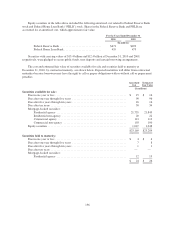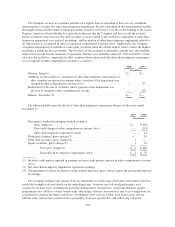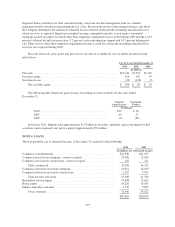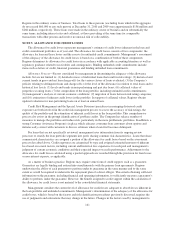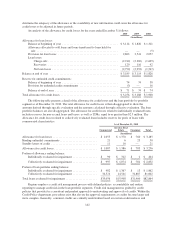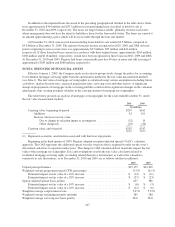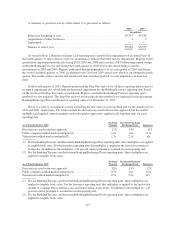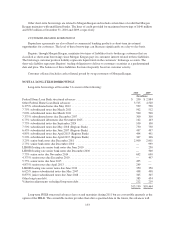Regions Bank 2010 Annual Report Download - page 157
Download and view the complete annual report
Please find page 157 of the 2010 Regions Bank annual report below. You can navigate through the pages in the report by either clicking on the pages listed below, or by using the keyword search tool below to find specific information within the annual report.policies that are modified as appropriate. Larger commercial and investor real estate transactions are individually
underwritten, risk-rated, approved and monitored.
Responsibility and accountability for adherence to underwriting policies and accurate risk ratings lies in the
lines of business. For the consumer portfolio segment, the risk management process focuses on managing
customers who become delinquent in their payments and managing performance of the credit scorecards, which
are periodically adjusted based on actual credit performance. For the commercial and investor real estate
portfolio segments, the risk management process focuses on underwriting new business and, on an ongoing basis,
monitoring the credit of the portfolios, including a complete review of the borrower semi-annually or more
frequently as needed. To ensure problem commercial and investor real estate credits are identified on a timely
basis, several specific portfolio reviews occur each quarter to assess the larger adversely rated credits for proper
risk rating and accrual status and, if necessary, to ensure such individual credits are transferred to Regions’
Special Assets Division.
There are also separate and independent commercial and investor real estate credit risk management and
consumer credit risk management organizational groups. These organizational units partner with the business line
to assist in the processes described above, including the review and approval of new business and ongoing
assessments of existing loans in the portfolio. Independent commercial, investor real estate, and consumer credit
risk management provides for more accurate risk ratings and the timely identification of problem credits, as well
as oversight for the Chief Credit Officer on conditions and trends in the credit portfolios.
Credit quality and trends in the loan portfolio segments are measured and monitored regularly and detailed
reports, by product, business unit and geography, are reviewed by line of business personnel and the Chief Credit
Officer. The Chief Credit Officer reviews summaries of these credit reports with executive management and the
Board of Directors. Finally, the Credit Review department provides ongoing independent oversight of the credit
portfolios to ensure policies are followed, credits are properly risk-rated and that key credit control processes are
functioning as intended.
The following describe the risk characteristics relevant to each of the portfolio segments.
Commercial —The commercial loan portfolio segment includes commercial and industrial, representing
loans to commercial customers for use in normal business operations to finance working capital needs,
equipment purchases or other expansion projects. Commercial also includes owner-occupied commercial real
estate loans to operating businesses, which are loans for long-term financing of land and buildings, and are repaid
by cash flow generated by business operations. Owner-occupied construction loans are made to commercial
businesses for the development of land or construction of a building where the repayment is derived from
revenues generated from the business of the borrower. Collection risk in this portfolio is driven by the
creditworthiness of underlying borrowers, particularly cash flow from customers’ business operations.
Investor Real Estate—Loans for real estate development are repaid through cash flow related to the
operation, sale or refinance of the property. This portfolio segment includes extensions of credit to real estate
developers or investors where repayment is dependent on the sale of real estate or income generated from the real
estate collateral. A portion of Regions’ investor real estate portfolio segment is comprised of loans secured by
residential product types (land, single-family and condominium loans) within Regions’ markets. Additionally,
these loans are made to finance income-producing properties such as apartment buildings, office and industrial
buildings, and retail shopping centers. Loans in this portfolio segment are particularly sensitive to valuation of
real estate.
Consumer—The consumer loan portfolio segment includes residential first mortgage, home equity, and
indirect and other consumer loans. Residential first mortgage loans represent loans to consumers to finance a
residence. These loans are typically financed over a 15 to 30 year term and, in most cases, are extended to
borrowers to finance their primary residence. Home equity lending includes both home equity loans and lines of
credit. This type of lending, which is secured by a first or second mortgage on the borrower’s residence, allows
143





